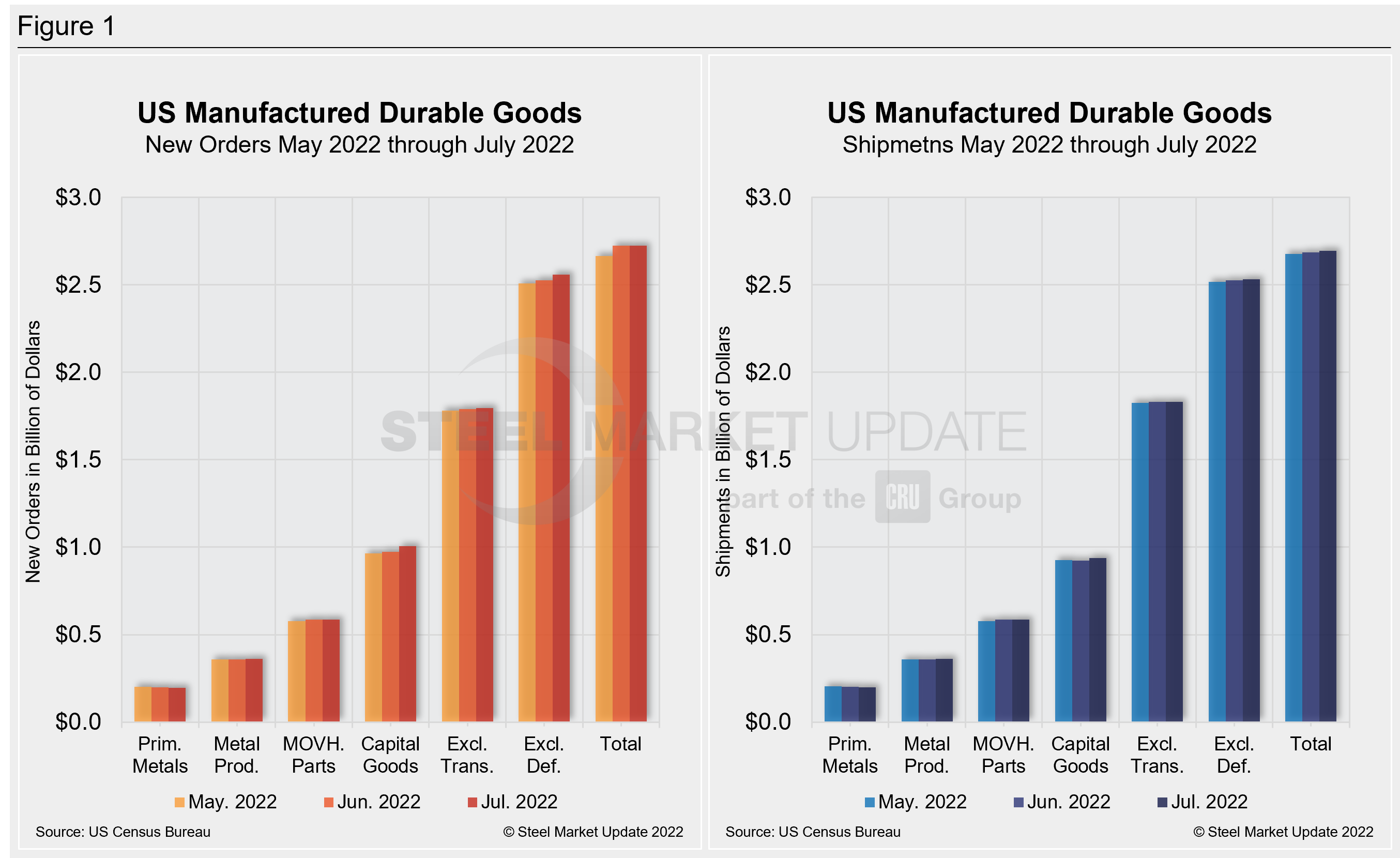Economy

July Durable Goods Stall, Little Changed From June
Written by David Schollaert
August 25, 2022
New orders for US manufactured durable goods stalled in July, at a seasonally adjusted $273.5 billion last month, virtually mirroring the month prior. But a pullback on orders for long-lasting goods in July might reflect a cooling in demand amid other signs of a slowing US economy.
Last month’s bookings for durable goods were down roughly 0.04% or less than $0.1 billion month-on-month (MoM) – virtually unchanged – following a 2.2% gain a month earlier, according to the Commerce Department. Figures are not adjusted for inflation.
Excluding defense, new orders were up 1.2%, as companies pulled back on orders for big-ticket items in July. The result, some economic forecasts suggest, adds to signs manufacturing demand is cooling.
The value of core capital goods orders – a proxy for investment in equipment that excludes aircraft and non-defense capital goods – expanded by 0.3%. The result was slightly improved from expected gains of 0.2%.
Non-defense orders, excluding aircraft, were up 0.4% versus a 0.9% gain the month prior. The result in July was slightly better than forecasted gains of 0.3%.
Shipments of manufactured durable goods, up 14 of the last 15 months, rose 0.4% to $270.5 billion. That’s after a 0.3% increase in June. Transportation equipment, up nine of the last 10 months, drove the increase, rising 1.1% to $86.3 billion.
Click here more detail on the June advance report from the US Census Bureau on durable goods manufacturers’ shipments, inventories, and orders. See also Figure 1 below.

Revised and Recently Benchmarked June Data
Revised seasonally adjusted June figures for all manufacturing industries were: new orders, $554.3 billion (revised from $555.2 billion); shipments, $550.3 billion (revised from $551.9 billion); unfilled orders, $1,118.7 billion (revised from $1,118.0 billion) and total inventories, $801.5 billion (unchanged from $801.5 billion).
By David Schollaert, David@SteelMarketUpdate.com

David Schollaert
Read more from David SchollaertLatest in Economy

New York state manufacturing index drops again in April
Firms were pessimistic, with the future general business conditions index falling to its second lowest reading in the more than 20-year history of the survey

Construction adds 13,000 jobs in March
The construction sector added 13,000 jobs, seasonally adjusted, in March, but tariffs could undermine the industry.

Supply chains, end-users brace for impact from tariffs
Supply chains are working through what the tariffs mean for them

ISM: Manufacturing expansion loses steam after two months of growth
US manufacturing activity slowed in March after two straight months of expansion, according to supply executives contributing to the Institute for Supply Management (ISM)’s latest report.

Chicago Business Barometer rose to 16-month high in March
The Chicago Business Barometer increased for the third-consecutive month in March. Despite this, it still reflects contracting business conditions, as it has since December 2023.
